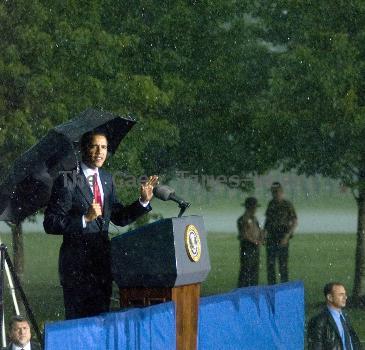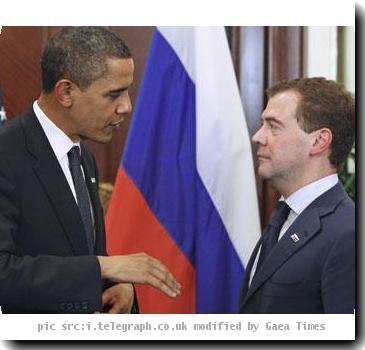Regrets and defiance aboard government flight that takes illegal immigrants back to Mexico
By Sophia Tareen, APSaturday, July 31, 2010
A look inside the government’s deportation flights
CHICAGO — Guillermo Campos Ojeda stares blankly at the clouds from the jetliner’s window, mentally retracing the 22 years that he lived in the United States as an illegal immigrant.
His odyssey began in 1988 with an illegal border crossing and ended in May when he was pulled over for driving without a license. In between were double shifts at a Chicago factory, a string of run-ins with the law, a marriage and his ultimate joy: the birth of his daughter, now 2, who is a U.S. citizen.
But on this flight arranged by the federal government, his journey takes a new turn: Ojeda is being deported along with 52 other illegal immigrants. Their day starts at a suburban Chicago processing center and ends with a lonely walk across a bridge from Brownsville, Texas, into Mexico.
“For 10 years, I worked two jobs. I didn’t ask the government for anything, not welfare, nothing,” he said in Spanish, awkwardly wiping away tears with the backs of his hands, which are shackled like those of all the passengers. “I’m not perfect, but there are consequences, and I have to pay.”
Flights like this one leave from some 40 U.S. cities, sometimes on a daily basis. In the last year, more than 350,000 illegal immigrants have been deported — about 220,000 by plane. The number of immigrants sent back to their homelands has more than tripled in the last decade and is expected to continue soaring.
An Associated Press reporter was permitted to go on a recent flight, obtaining a rare glimpse into the emotional final hours of illegal immigrants who are leaving their American lives for uncertain futures in Mexico.
The day starts before sunrise for each of the 53 deportees brought from area prisons to a U.S. Immigration and Customs Enforcement center in Broadview, Ill.
In large holding cells, many of the immigrants wait wrapped in scratchy brown blankets as Mexican consulate officials review their papers and give each $20 to use on the other side of the border.
Ojeda says goodbye to his wife and child over a phone in a room where glass separates visitors. Speaking into the telephone, he looks intently at his wife and baby girl. Nearby a sign reads, “No touching allowed.”
Most of those aboard the flight came to authorities’ attention after being convicted of a crime in the U.S. One was convicted of murder, 16 for assault, 11 for driving under the influence, nine for drug charges and six for theft. Another six had no criminal background.
By 9 a.m., they are lined up, searched and shackled — no matter the crime. The sound of chains and handcuffs echoes down the hallway.
“I’ll be on my way back, man!” a man yells at a guard as he’s being cuffed.
Among the group is 24-year-old Alberto Ortiz Hernandez, who came to the U.S. as a teenager, speaks better English than Spanish and has a wife who is a U.S. citizen.
The baby-faced resident of Appleton, Wis., missed an important 2009 hearing in his immigration case and was immediately ordered deported. Hernandez didn’t leave, but lived as covertly as possible until he was picked up in March for driving without a license.
He has a shot at coming back to the U.S. legally but will have to wait for several years in Mexico City with his mother and two sisters.
“I want to do the right thing,” he says.
His wife, Farrah Hernandez, who’s expecting a child, worries about paying bills without her husband’s income.
“If he comes back the wrong way, he’ll never be able to apply for residency,” she said in a phone interview. “The only thing you can do is wait.”
At a quiet terminal away from the hustle of the nation’s second-busiest airport, deportation flights leave O’Hare International Airport twice a week. They are chartered either by ICE or the U.S. Marshals Service.
As passengers are patted down and searched, security officers lay out the immigrants’ bags on the tarmac, each one marked with a mug shot. One beat-up black duffel bag was filled with clothes. A green barracks bag is topped with socks. One clear plastic bag has two Spanish Bibles in it.
Moises Calvillo, a Los Angeles man with a shaved head and goatee, has one of the longest rap sheets in the group — weapons charges, battery, immigration offenses. This is his third deportation from the U.S.
The 46-year-old arrived in 1979 from Tijuana and started making jewelry at a shop in southern California. The next few decades were laden with arrests and convictions.
He expects this to be his final trip back to Mexico. The jewelry business had been declining and communication with his eight children had been minimal. They are all U.S. citizens, including a probation officer, a soldier stationed in Iraq and a deputy for the Los Angeles County Sheriff’s Office.
“I can’t complain,” he says while awaiting the flight. “Nobody mistreated me.”
__
Some of the immigrants sent away on these flights will be back, perhaps soon. Authorities at ICE say they must carry out the law, even when that means returning the same people repeatedly at an average cost of $650 per person for the one-way flight.
“It’s a fact of life. They’re the border crossers, that’s what they do,” said ICE’s chief of flight operations, Craig Charles. “They live there. They come across, and they’ll get caught. It is a revolving door.”
Later this year, the agency is set to start a tactic aimed at deterring immediate re-crossings. Flights will be taken to the interior of Mexico, which will make it harder for immigrants to return right away.
Even so, experts are doubtful illegal immigration will decline without economic incentives or a significant change in the law.
Most people, including the estimated 12 million illegal immigrants living in the U.S., are waiting to hear more from President Barack Obama, who so far has addressed immigration reform by amping up border security and challenging Arizona’s controversial immigration law, the toughest in the nation.
“He’s talked a lot,” said Rene Roman Navarrete, a 36-year-old illegal immigrant from Acapulco aboard the flight who’s crossed illegally at least twice. “But nothing has been done.”
Aboard the plane, the journey feels similar to a commercial flight, except for the nearly two dozen armed guards and the soft clinking of handcuff chains that can sometimes be heard amid the roar of the jet engines.
Sitting in 9A — a few rows away from the male passengers — is 28-year-old Yesenia Pereyda Martinez, the sole woman in the group.
The suburban Chicago mother of three crossed illegally into the U.S. in 2000 by walking for two days through the desert. She carries a painful reminder of the journey every day: her toes are deformed and stubby from the shoes she wore. Now wearing anything but open-toed shoes is painful. On the day of the deportation flight, she wears fuzzy black flip-flops.
Martinez sits still nearly the entire three-hour flight. Her brown-bag lunch of a bologna sandwich, vanilla cake and apple goes untouched.
“I am scared,” she says.
She spends the flight thinking of her children: 8-year-old Julianna, who loves to draw and do homework; 6-year-old Guadalupe, who rebels against homework; and their 1-year-old baby brother.
Martinez took a risky trip back to Mexico earlier this year to see an ailing family member for the last time. Then the smuggling van that was returning her to the U.S. was pulled over by an Illinois state trooper just hours from her home in the Chicago suburb of Cicero.
While she waits in a holding cell on the day of the flight, a guard hands her a cell phone to make a final call to Luis, a man she calls her husband, though they have no legal union.
“I don’t have a lot of time, Luis,” she says in Spanish before telling him she has $200 to take to the home of her father, a man she hardly knows. “I’ll talk to you later. Cuidate. Gracias. Bye.”
Her future plans are murky. But she knows her mother, sister and Luis will take care of the children. She wants them to finish their education. The children think their mom is just on a trip to see family.
“They don’t want to leave,” she said.
When the plane lands in Harlingen, Texas, the immigrants are loaded on a bus that drives by fields of tall sorghum on the way to the border.
In Brownsville, officers unshackle each of the detainees, hand them their belongings and walk them across the high-traffic bridge.
As the group crosses, one pedestrian spots them, throws his hands up and mutters, “It’s a revolving door!”
Waiting on the other side are smugglers on the lookout for deported immigrants, who are easily spotted by the bags of belongings that bear their names and mugshots.
Ojeda was among the last people released. In 1998, he tried to cross and was apprehended by border agents who sent him back the same day. He made another attempt shortly thereafter.
But this time, he says, he won’t try to come back. The consequences are too great: an increased jail sentence and the threat to his health, especially because of his diabetes.
Carrying a small bag of clothes, a little cash and a two-week supply of insulin, the 40-year-old man walks over the bridge. Despite the hardship of separation, he won’t consider asking his family to join him in Mexico.
“There isn’t work. There aren’t resources. There are a lot of drugs. There’s a lot of violence,” Ojeda says. “I wouldn’t bring my daughter into that.”
(This version CORRECTS Yesenia Pereyda Martinez’s last name to Martinez on all references.)
Tags: Barack Obama, Brownsville, Central America, Chicago, Illinois, Immigration Policy, Latin America And Caribbean, Mexico, North America, Texas, United States





